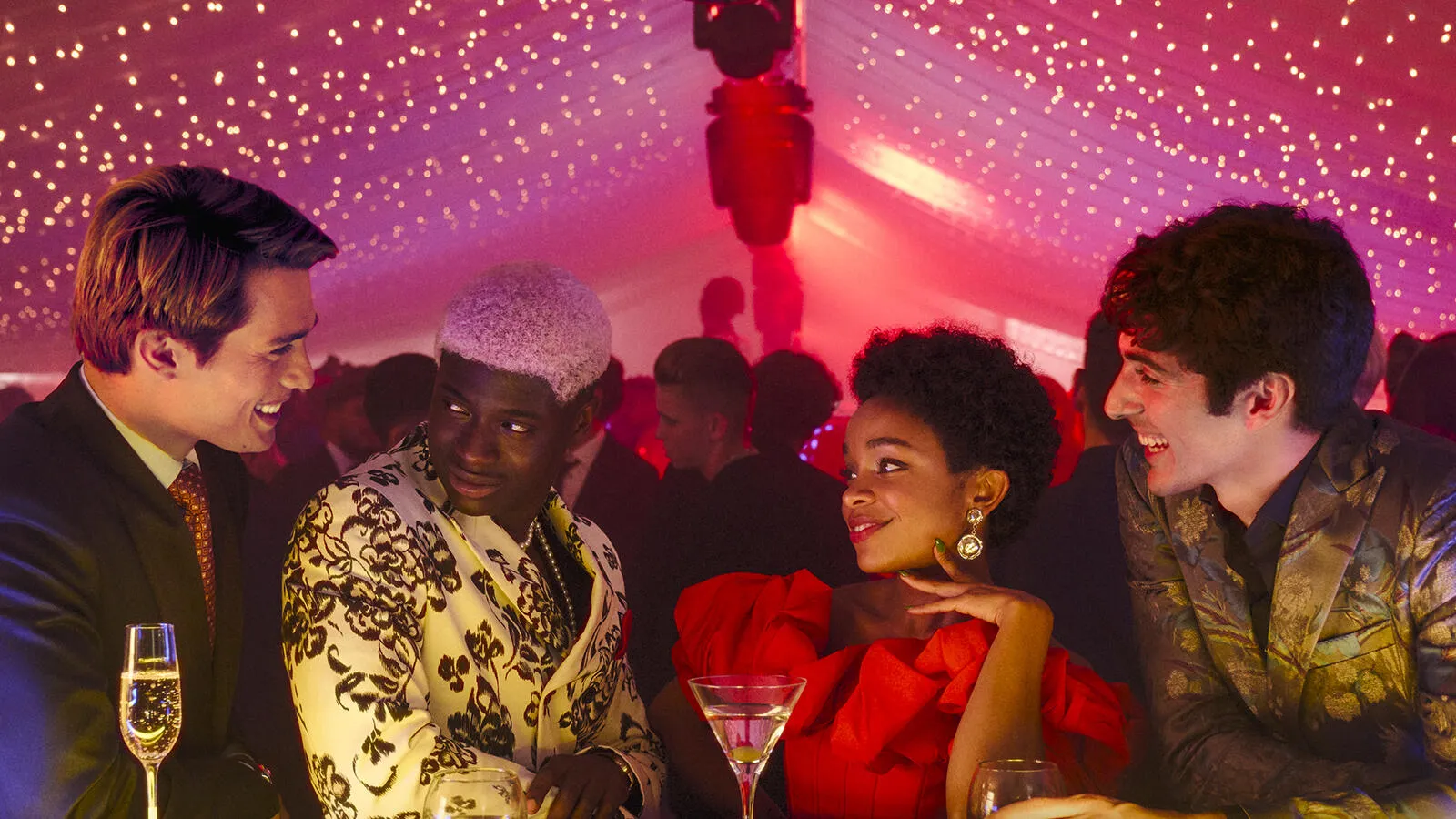Table of Contents Show
As the world continues to accept the LGBTQ+ community, Male-Love-Male (MLM) media and the role it holds in influencing attitudes toward the LGBTQ+ community is significant; this has led LGBTQ+ youth to look out for media that validates their identities. (( Lauren B. McInroy & Shelley L. Craig (2017) Perspectives of LGBTQ emerging adults on the depiction and impact of LGBTQ media representation, Journal of Youth Studies, 20:1, 32-46, DOI: 10.1080/13676261.2016.1184243 )).
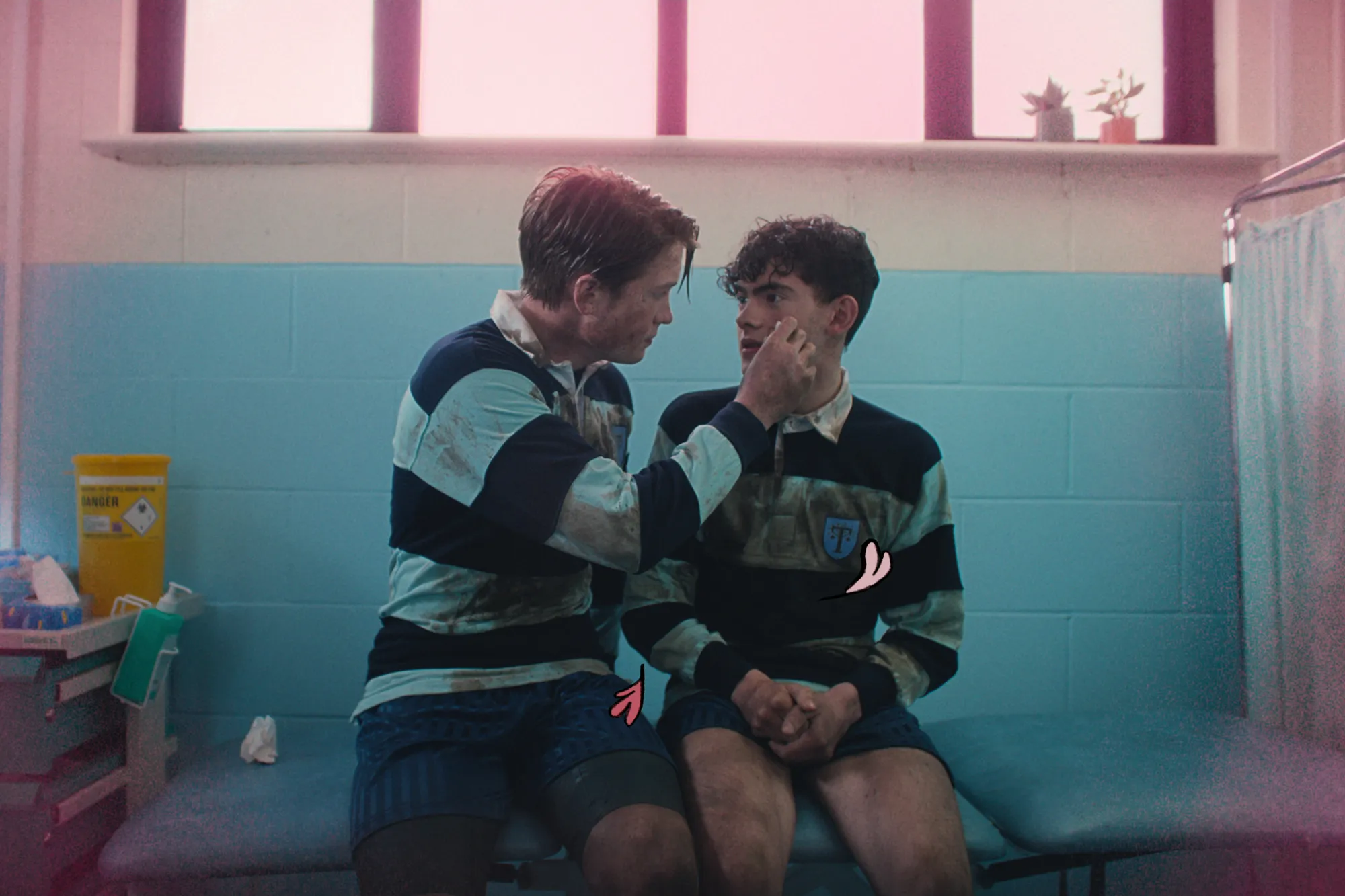
However, mainstream examples of LGBTQ+ representation often lack realistic perspectives on how LGBTQ+, specifically gay men, navigate through relationships in terms of intimacy for the sake of profit. Consistent depictions of MLM relationships that are sanitized for general and younger audiences often lack cultural connection to the community, therefore reinforcing societal expectations of intimacy and homosexuality that the LGBTQ+ community must meet.
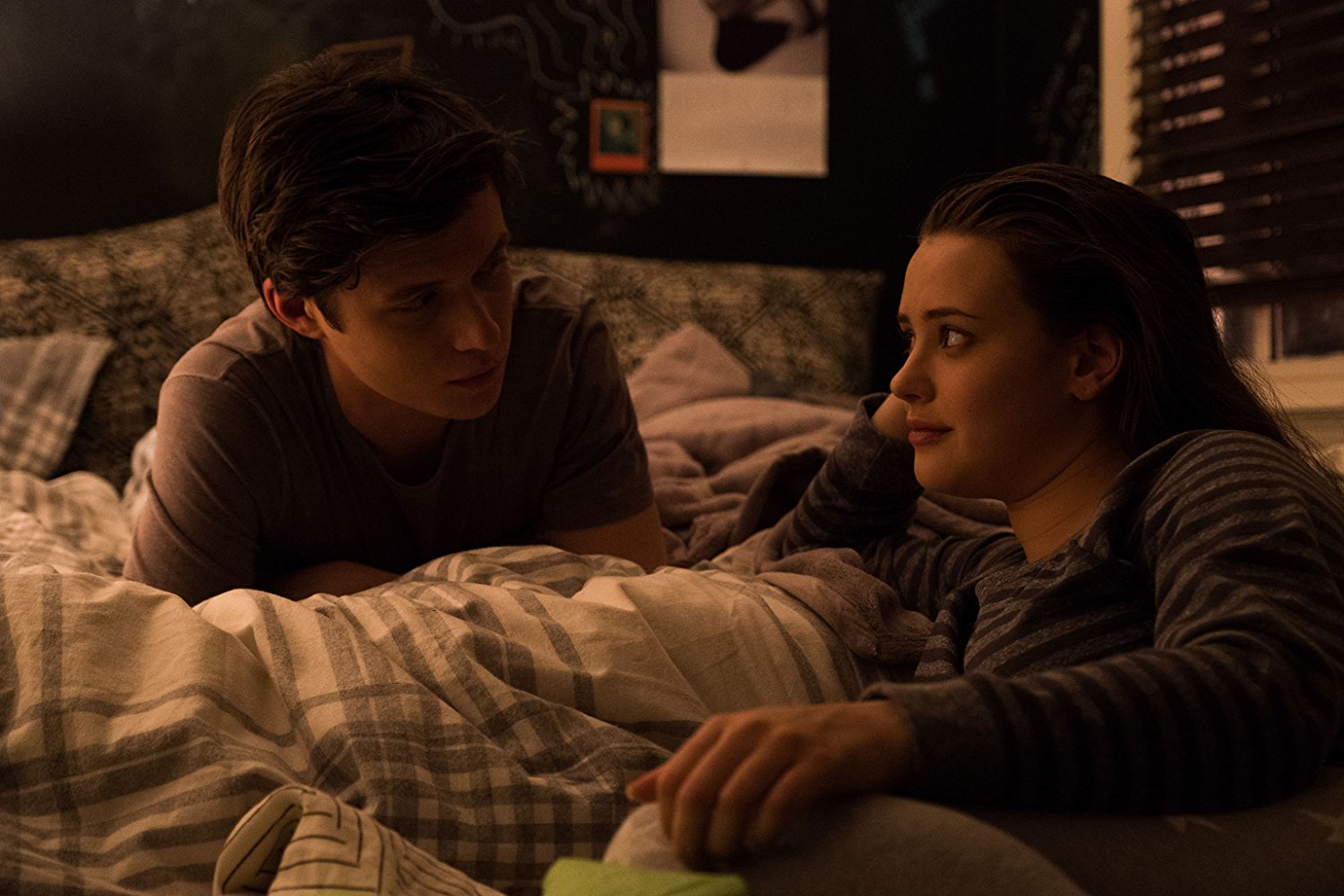
Heartstopper (2022-present) and Red, White, and Royal Blue (2023) are popular examples of how LGBTQ+ media may seem to be unrealistic. Either through the plot itself or the consistently mature communication between young teens in their first relationship, these examples of escapist MLM media have been praised for its wholesomeness providing LGBTQ+ youth and adults comfort in contrast with their struggles within the reality of our current political climate.
A Brief History Of LGBTQ+ Representation
Unlike today, LGBTQ+ representation was not limited and not accepted by general audiences out of little acceptance people had for the community; the Production Code of 1930 would force directors (( Baker, S. (2015). The changing face of gay representation in Hollywood films from the 1990s onwards: What’s really changed in the Hollywood representation of gay characters? The International Journal of Interdisciplinary Cultural Studies, 10(4), 41–51. https://doi.org/10.18848/2327-008x/cgp/v10i04/53191 )) to sort to film tropes that have impacted any portrayal of same-sex relationships.
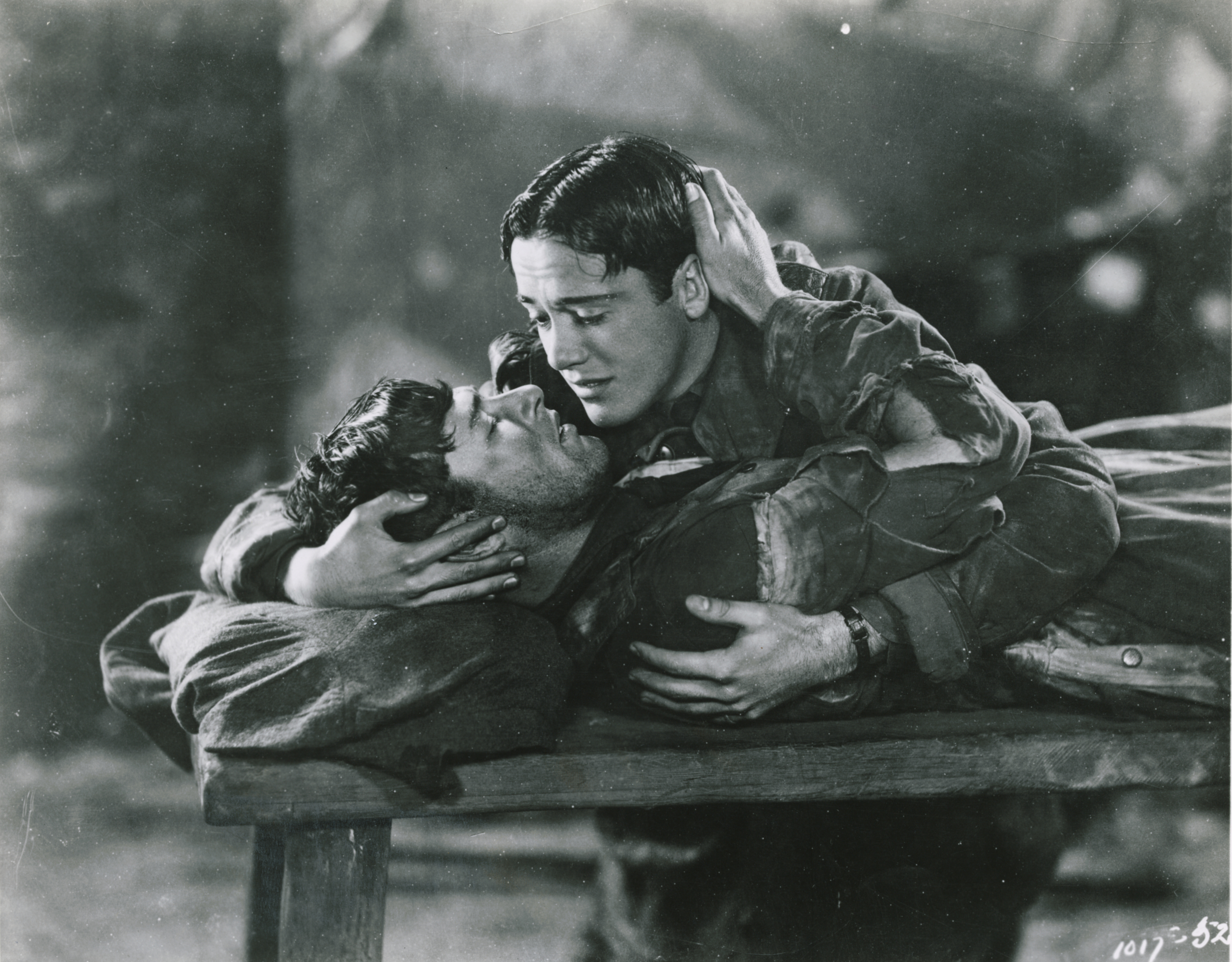
During the ’60s and ’70s, gay characters were shown more frequently when this code was loosened, but gay characters were portrayed negatively as suicidal, dangerous, or predatorial. The infamous Bury Your Gays (( Hulan, H. (2017). Bury your gays: History, Usage, and Context. ScholarWorks@GVSU. https://scholarworks.gvsu.edu/mcnair/vol21/iss1/6/ )) (death of one lover and the other remaining with a heterosexual partner) trope would set the expectation for tragedy in any implied LGBTQ+ romance. Intimacy and the depiction of sexuality in LGBTQ+ film was often limited or nonexistent as well.
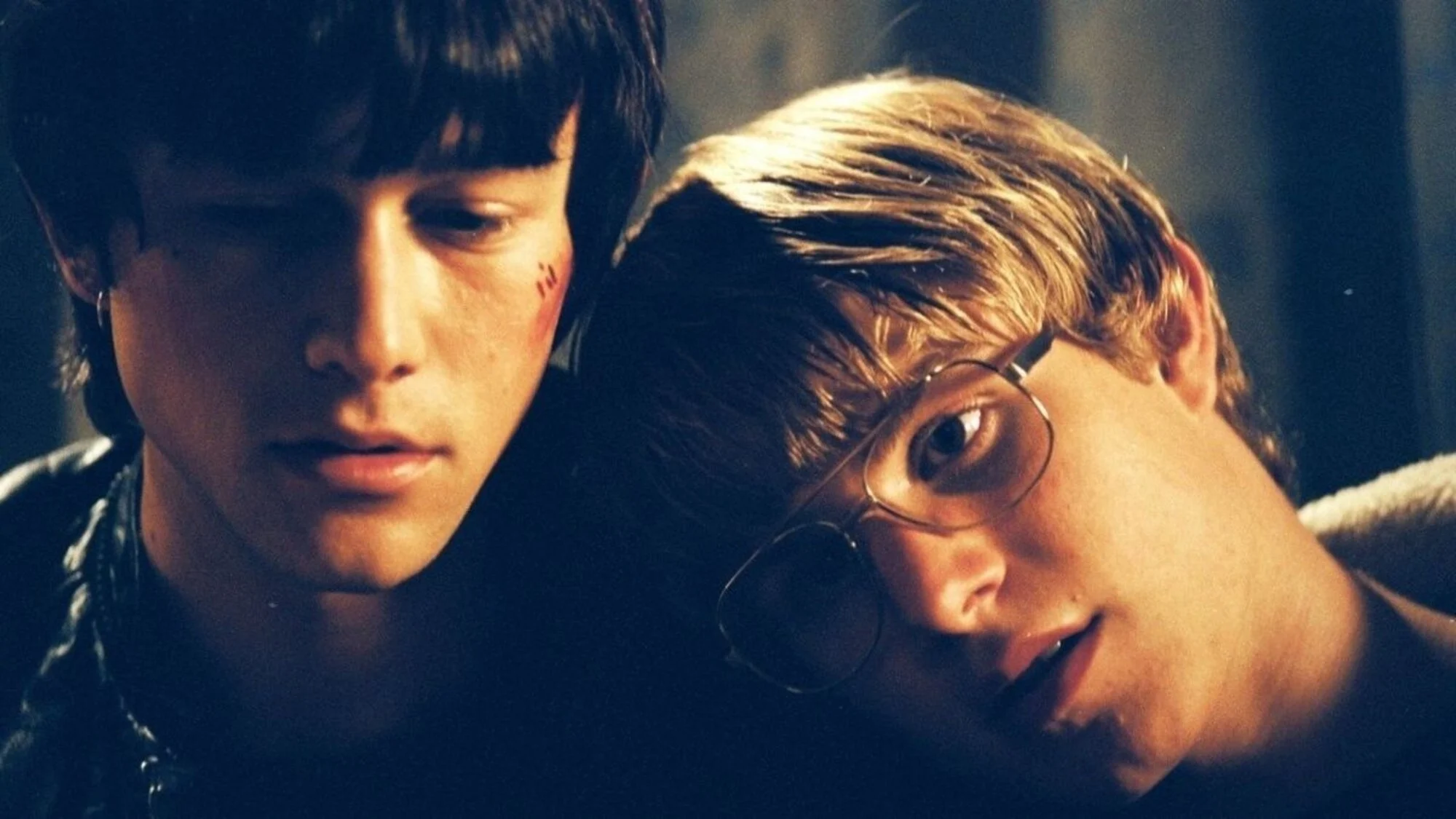
This changed during the 90s as films that had LGBTQ+ representation became more explicit with the New Queer Cinema Movement. Queer filmmakers such as Gregg Araki, Cheryl Dune, Todd Haynes, and Jennie Livingston created movies that were centered around the anger and invisibility the LGBTQ+ community experienced in society during the AIDs crisis (( Linna. (2021, March 19). New Queer Cinema and its impact on Queer Cinema. The Queer Queue. )).
How Corporatization Plays Into MLM Media
Following the New Queer Cinema Movement, films and shows that have been released in the past five years: Love, Simon (2018), Heartstopper (2022-present) (( Netflix’s Heartwarming Debut Of ‘Heartstopper‘ (2022-) • The Daily Fandom )), and Red, White and Royal Blue (2023) have been praised for their accurate and wholesome depictions of MLM relationships.

Attracting as many viewers as possible to a film or television show is a goal that influences aspects of MLM-focused films; catering not only to an LGBTQ+ audience, but a straight audience ensures higher profit (( Ng, E. (2013). A “post-gay” era? media Gaystreaming, homonormativity, and the politics of LGBT integration. Communication, Culture & Critique, 6(2), 258–283. https://doi.org/10.1111/cccr.12013 )). This concern falls with the rise of Rainbow-washing: the act of appealing to LGBTQ+ consumers through performative solidarity through posts and or products while upholding homophobic and transphobic practices. Once, pride month begins, advertising or release of any LGBTQ+ content is taken as a timed marketing ploy.
Netflix for example posted the coming-out scene for Heartstopper (2022-present) on Twitter for the first day of pride. Yet, co-CEO of Netflix Ted Sarandos supports Gervais’ latest stand-up comedy special, despite his transphobic comments made towards Eddie Izzard (( Stratis, N. (2022, June 1). Netflix has no business talking about Pride Month. VICE. https://www.vice.com/en/article/akv5b4/lgbtq-netflix-pride-month )). Another streaming service guilty of rainbow washing is Amazon Prime, as they have turned a blind eye to selling transphobic books and have provided financial donations to anti-LGBTQ+ politicians supporting anti-LGBTQ+ legislation (( Long, K. (2022, June 2). Amazon Employees Storm a company pride month celebration, protesting the sale of transphobic content. Business Insider. https://www.businessinsider.in/tech/news/amazon-employees-storm-a-company-pride-month-celebration-protesting-the-sale-of-transphobic-content/articleshow/91950308.cms )).
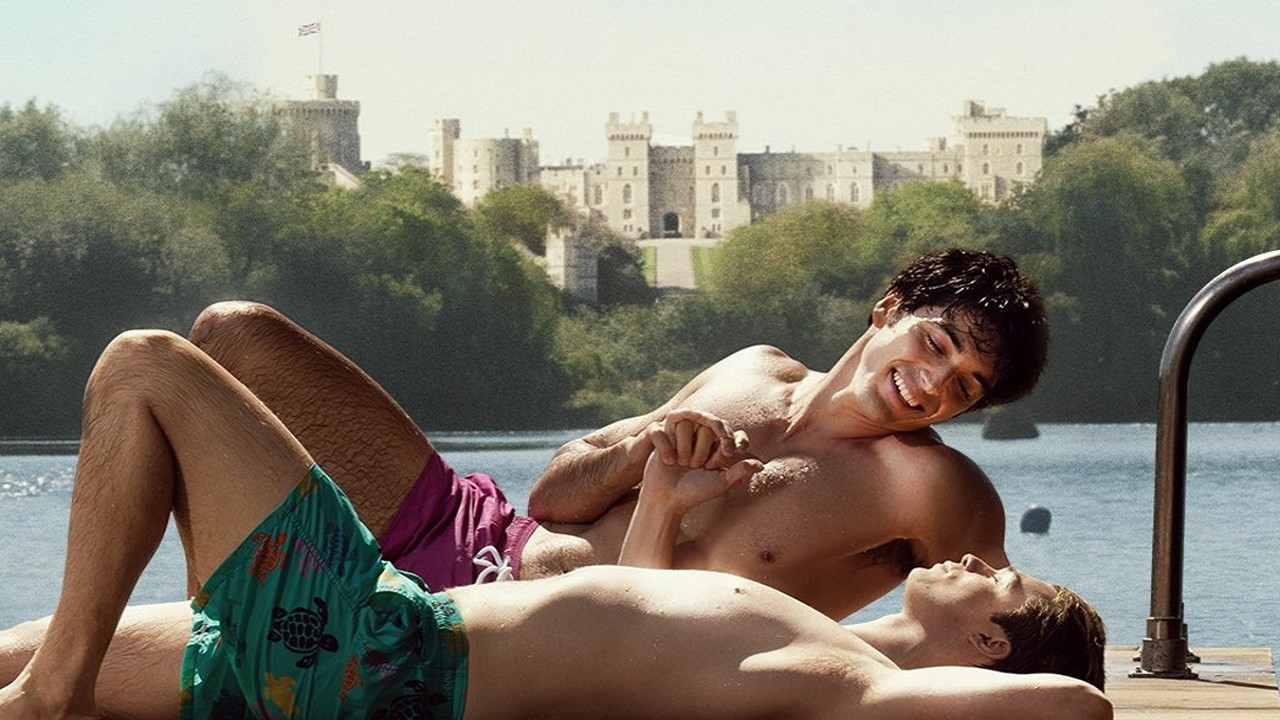
The same company that claims to support the LGBTQ+ community by highlighting LGBTQ+ movies and shows recently released Red, White, and Royal Blue (2023). Gaining further profit by appealing to LGBTQ+ consumers through rainbow washing is an economic strategy that has led to a disconnection with the LGBTQ community they performatively appeal to and support, explaining how these popular LGBTQ+ shows and films can evoke a feeling of artificiality by generalizing LGBTQ+ people through stereotypes (( McNeil, O. (2021, January 31). At the end of the rainbow: Corporate LGBTQ marketing. CLEAR. https://lgbtq-economics.org/2020/07/09/at-the-end-of-the-rainbow/ )) in context with these companies anti-LGBTQ+ beliefs.
The Homonormativity Of MLM Media
Other than large film companies performatively supporting the LGBTQ+ community, the casting of conventionally attractive, well-known, and often straight actors is key for attracting a straight audience. (( Ng, E. (2013). A “post-gay” era? media Gaystreaming, homonormativity, and the politics of LGBT integration. Communication, Culture & Critique, 6(2), 258–283. https://doi.org/10.1111/cccr.12013 )). Heartstopper (2022-present), Bros (2022), Brokeback Mountain (2005), and Call Me By Your Name (2017) are a few examples of couples who fit these standards and are popular among a general audience.
In fact, a study investigating messages on gender and sexual identity, as well as comparing the difference between traditional and old media LGBTQ+ content through interviews, found that participants believed traditional media was created for financial profit since general LGBTQ+ content may seem “unique or exciting” to straight audiences (( Lauren B. McInroy & Shelley L. Craig (2017) Perspectives of LGBTQ emerging adults on the depiction and impact of LGBTQ media representation, Journal of Youth Studies, 20:1, 32-46, DOI: 10.1080/13676261.2016.1184243 )). They also match with the characteristics of “good gays:” Homonormative MLM couples that are white, middle to upper class, and monogamous. This particular depiction of gayness is limiting but palatable to straight audiences who may be uncomfortable with individuals who do not fit into the “good gay” label.

This may explain the assimilation of gay characters through “innocence,” and the lack of scenes that demonstrate sex and intimacy within the context of our reality. For example, the intimate sex scene between Alex and Prince Henry likely resulted in an R-rating for Red, White & Royal Blue, despite a lack of nudity in the film overall. Discomfort with queer sex creates a phenomenon where avoidance of sexuality becomes a norm, so as to ignore the historical stigma behind gay sex post-AIDS crisis.
Therefore, these films ignore the socio-political issues present during the releases of MLM films to entertain general audiences without challenging the status quo of MLM film tropes and archetypes for the sake of familiarity with hetero-norms, and profit.
New Generation (Zoomers) Versus Old Gen (Millennials, Baby Boomers)
Generation Z (( Goldman, J. (2023, June 2). Gen Z consumers increasingly identify as LGBTQ+. Insider Intelligence. )) who identify as LGBTQ+ the most by 20.8% (compared to 10.5 % Millennials & 4.2% for GenX), can be attributed to shifts and acceptance of the LGBTQ community in society. So — political events and acceptance of the LGBTQ community do shape how an LGBTQ character in an MLM relationship should or should not be depicted in a story. Complexity, as well as a decrease of focus on a character’s LGBTQ identity as a defining trait of a character, may be considered more important for LGBTQ+ youth (( Lauren B. McInroy & Shelley L. Craig (2017) Perspectives of LGBTQ emerging adults on the depiction and impact of LGBTQ media representation, Journal of Youth Studies, 20:1, 32-46, DOI: 10.1080/13676261.2016.1184243 )).

Coined by journalists in the 90s, we now live in a “post-gay” era where gay and gender nonconforming middle-class Americans have more social mobility (( Ng, E. (2013). A “post-gay” era? media Gaystreaming, homonormativity, and the politics of LGBT integration. Communication, Culture & Critique, 6(2), 258–283. https://doi.org/10.1111/cccr.12013 )). De-labeling and distancing from the explicit labels of sexual identity create tension between individuals within the LGBTQ+ community.
“The gay audience is moving back into the suburbs, they’re raising families, their best friends are straight, they’re close with their families, they have lots of straight coworkers who know that they’re gay and they’re okay with that.”
Marc Leonard (( Ng, E. (2013). A “post-gay” era? media Gaystreaming, homonormativity, and the politics of LGBT integration. Communication, Culture & Critique, 6(2), 258–283. https://doi.org/10.1111/cccr.12013 ))
New media has also become an outlet for youth to socialize and connect with the LGBTQ+ community, which has allowed individuals to be more separated from political influences. Focusing on tragedy and the challenges faced with oppression is simply no longer relatable or desirable.
The generational (( Bitterman, A., & Hess, D. B. (2020, November 30). Understanding generation gaps in LGBTQ+ communities: Perspectives about gay neighborhoods among heteronormative and homonormative generational cohorts. The Life and Afterlife of Gay Neighborhoods: Renaissance and Resurgence. https://www.ncbi.nlm.nih.gov/pmc/articles/PMC7978647/ )) divide between Gen Z, Millennials, and Boomers in connection to homonormativity is a reason why escapism may be seen as a near-future reality for upcoming generations.
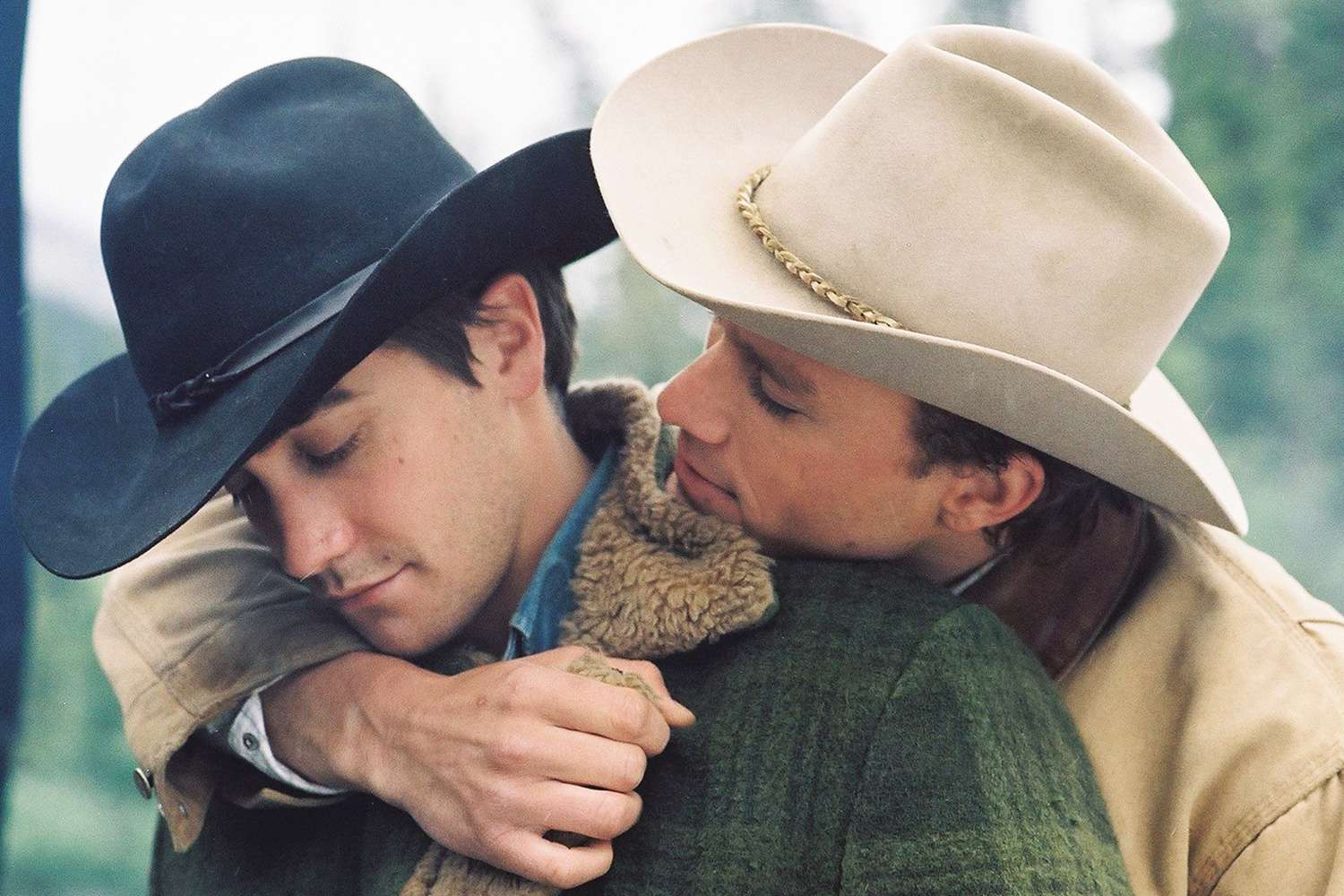
Laws positively impacting the LGBTQ+ community, such as the legal recognition of same-sex marriage in 2015 are often attributed to a positive shift in social attitudes. Still, the law’s significance is rooted in the desire to reach socio-economic privileges given through these homonormative (( Ng, E. (2013). A “post-gay” era? media Gaystreaming, homonormativity, and the politics of LGBT integration. Communication, Culture & Critique, 6(2), 258–283. https://doi.org/10.1111/cccr.12013 )) ideals. A fear of newer generations forgetting the history of the challenges older LGBTQ people faced (( Bitterman, A., & Hess, D. B. (2020, November 30). Understanding generation gaps in LGBTQ+ communities: Perspectives about gay neighborhoods among heteronormative and homonormative generational cohorts. The Life and Afterlife of Gay Neighborhoods: Renaissance and Resurgence. )) is a possibly wider-scale possible effect of MLM media ignoring LGBTQ+ histories that brought the community together.
What Is The Future Of Male-Love-Male Media?
Viewers apart of the LGBTQ+ community may not always want to be reminded of current crises either. The novel Red, White, and Royal Blue (2019) was written during the 2020 US presidential elections and the COVID-19 pandemic acting as an example of LGBTQ consumers searching for a safe haven from reality. The escapist qualities of the film adaptation-The Prince of Britain having a relationship with the son of the US President with a feel-good political subplot- is cheesy but comforting. Just like any other Hallmark-esque romance, having access to a movie that’s lighthearted and fantastical is something many seek during a period of crisis.
“But what is the truth of homosexuality? Whose experience is genuine?”
Vito Russo (( Baker, S. (2015). The changing face of gay representation in Hollywood films from the 1990s onwards: What’s really changed in the Hollywood representation of gay characters? The International Journal of Interdisciplinary Cultural Studies, 10(4), 41–51. https://doi.org/10.18848/2327-008x/cgp/v10i04/53191 ))
An oversaturation of either realistic or escapist type media could impact the societal perceptions of the LGBTQ+ community (( Lauren B. McInroy & Shelley L. Craig (2017) Perspectives of LGBTQ emerging adults on the depiction and impact of LGBTQ media representation, Journal of Youth Studies, 20:1, 32-46, DOI: 10.1080/13676261.2016.1184243 )) at a global scale, therefore creating limited depictions of MLM relationships. But MLM representation will never completely be universal.
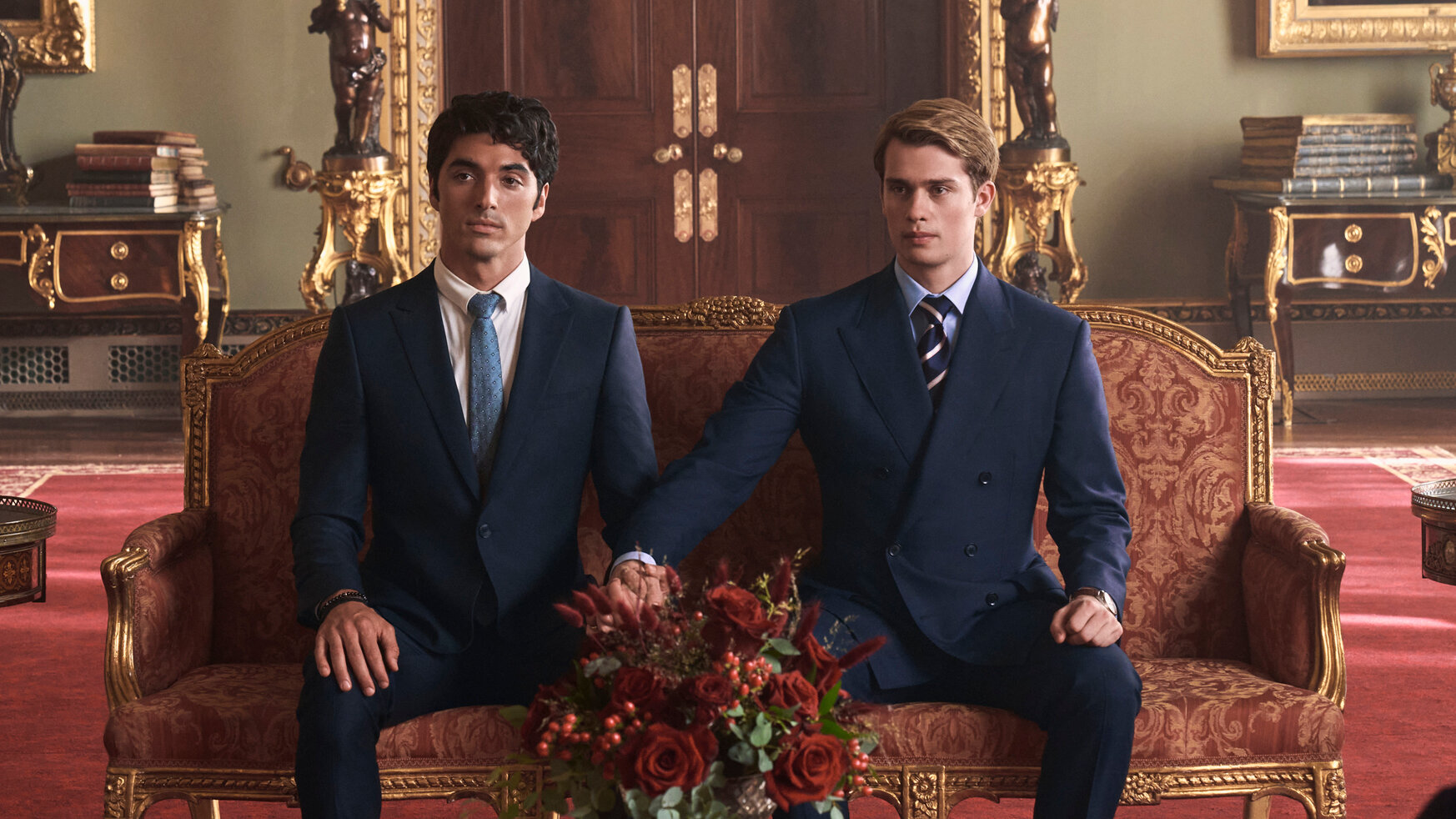
The nuance of the LGBTQ+ identity is challenging to capture in film. Therefore, achieving a balance between escapism and realism in MLM and overall LGBTQ+-based content could allow LGBTQ+ individuals to relate to various genres of film and media.
